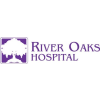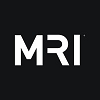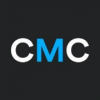Director of Risk Position Summary The Director of Risk Management is responsible for leading patient safety and risk management initiatives across the organization.
Key responsibilities include managing claims, conducting risk assessments, performing root cause analyses, and overseeing the Patient Safety Council.
The role requires collaboration with department directors and the executive team to implement risk reduction strategies, ensure compliance with regulatory standards, and drive continuous improvement in patient safety.
This position demands expertise in data analysis, reporting, education, and leadership. Essential Job Duties and Responsibilities 1.
Budget Responsibility : Planning : Assist in preparing budgets for assigned departments. Meeting Objectives : Ensure the department operates within budget guidelines, aiming to exceed projections.
Cost Control : Manage department costs effectively, anticipate fluctuations, and identify opportunities for cost reduction.
Productivity : Monitor staffing levels, adjust FTEs based on volume and organizational goals, and ensure compliance with legal and care requirements.
Capital Equipment / Procurement : Participate in vendor selection and capital equipment budgeting, seeking alternatives where possible.
2. Organizational Responsibility : Service Excellence : Treat everyone with dignity and respect, fostering collaborative relationships with colleagues, patients, and families.
Participation : Regularly attend leadership and recognition events. Policy Development : Develop and implement policies that support service provision.
3. Human Resources : Recruitment / Staffing : Maintain adequate staffing levels, addressing shortages promptly. Retention : Implement strategies to retain quality staff and maintain turnover below facility goals.
Performance Management : Evaluate staff qualifications, provide continuous feedback, and ensure timely completion of evaluations.
Staff Requirements : Ensure compliance with job requirements, including certifications and testing. Staff Development : Identify and address staff learning needs, providing appropriate development opportunities.
Conflict Resolution : Facilitate open feedback and timely conflict resolution. 4. Leadership : Flexibility / Adaptability : Demonstrate the traits needed for successful management and adaptability in a changing environment.
Initiative : Drive innovative programs and continuous improvement in service delivery. Medical Staff Relations : Maintain positive relationships with medical staff, identifying opportunities for improved collaboration.
Employee Recognition : Use the Service Excellence program to recognize outstanding performance. Rounding : Regularly round on patients and staff, acting as a resource for interdisciplinary care.
Communication : Conduct regular staff meetings and share facility-wide updates as needed. Interdepartmental Collaboration : Work with peers to ensure consistent practices and appropriate resource utilization.
Town Hall Participation : Encourage staff to participate in Town Hall meetings, aiming for over 50% participation. Employee Engagement Survey : Ensure staff participation meets or exceeds 80%, using results to develop actionable improvement plans.
Committees / Work Groups : Promote staff involvement in committees and work groups. Facility Morale Activities : Encourage participation in facility-sponsored events.
5. Quality : Process Improvement : Lead and engage in process improvement initiatives, using data to drive quality enhancements.
Quality Targets : Ensure the department meets or exceeds quality targets. Regulatory Compliance : Maintain survey readiness and address areas of opportunity promptly.
Quality Improvement Program : Develop and maintain the department's Quality Improvement Program. 6. General Duties : Emergency Preparedness : Participate in drills and demonstrate understanding of emergency roles.
Education : Facilitate educational activities and in-services in collaboration with the Education Department. Policy and Procedure Management : Develop, review, and revise departmental policies and procedures.
Equipment and Supplies : Ensure availability of necessary equipment and supplies for quality service delivery. Safety Reporting : Report unsafe situations immediately and ensure malfunctioning equipment is addressed.
7. Position-Specific Responsibilities : Risk Management Program Administration : Serve as a resource for senior leadership and staff, participate in 24-hour call, and manage serious incident investigations.
Risk Identification : Maintain the risk management database and oversee facility risk assessments. Risk Management Education : Educate staff on risk management, patient safety, and best practices.
Risk Prevention : Collaborate with clinical leaders to ensure compliance with standards of care and best practices. Program Effectiveness : Provide regular reports on risk management effectiveness and trends.
Claims and Litigation Management : Lead investigations of serious incidents, manage claims, and ensure confidentiality of information.
Job Qualifications Education / Training / Experience : Bachelor’s degree in a related field required; Master’s preferred.
5-7 years of clinical experience in Risk Management required. Minimum of 3 years in a leadership role, preferably in an acute care setting.
CPHRM certification preferred. Certifications / Licenses : California license in the field of specialty. Certification in Healthcare Risk Management or Healthcare Quality preferred.
Essential Knowledge, Skills, and Abilities Communication : Ability to read and interpret business and professional materials, write reports, and present information effectively.
Mathematical Skills : Proficiency in basic and intermediate math, including statistical analysis. Reasoning Ability : Strong problem-solving skills, with the ability to interpret instructions in various formats.
Other Skills : Knowledge of Joint Commission and Title 22 standards. Strong leadership, communication, and interpersonal skills.
Proficiency in PC applications and quality tools like RCA and FMEA. Understanding of statistical analysis and Six Sigma (Lean) principles. Powered by JazzHR









